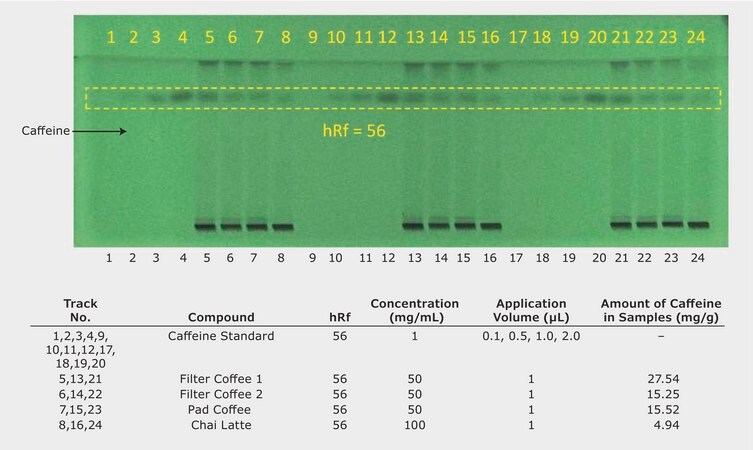TLC Analysis of Caffeine in Coffee Samples, Quantification of Analyte Concentration

Materials
accessory
Hamilton® TLC syringes
1705, volume 50 μL, needle size 22 ga, needle L 51 mm (2 in.),coated tip
CONDITIONS
sample preparation
The boiled coffee samples were extracted and filtered with a 0.45 μm Millex syringe filter.
plate
HPTLC Silica gel 60 F254, 20 cm x 10 cm (1.05642.0001)
eluent
[A] acetonitrile; [B] methanol; [C] n-Heptane; (6:4:1, A:B:C)
migration distance
5 cm
sample
0.1 μL to 2.0 μL
detector
UV, 254 nm
Description
Analysis Note
Abstract: HPTLC (High Performance Thin Layer Chromatography) is a very useful analytical technique with very low sample preparation. Shown in the example: the quantification of caffeine in different coffee samples. The boiled coffee samples
were extracted and filtered with a 0.45 μm syringe filter. The plate was pre-conditioned with the mobile phase. After chromatographic separation the plate was scanned with a TLC-Scanner and subsequently quantified.
Results: Caffeine was detected under UV light (254 nm, hRf = 56, Fig. 1), (quantification information Fig. 2). A triple determination of each sample is possible in parallel.
Conclusion: These results demonstrate that caffeine can be easily quantified by TLC with a three-fold determination and minimal sample preparation.